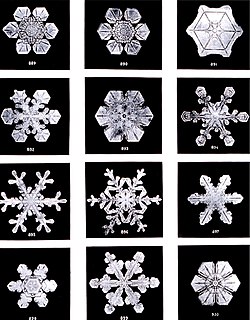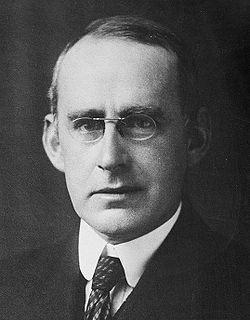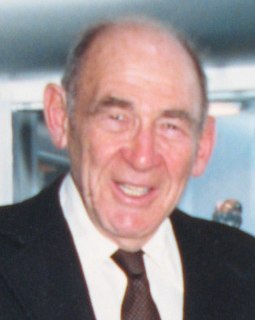The following outline is provided as an overview of and topical guide to chemistry:

Physics is the natural science that studies matter, its motion and behavior through space and time, and the related entities of energy and force. Physics is one of the most fundamental scientific disciplines, and its main goal is to understand how the universe behaves.
Physical science is a branch of natural science that studies non-living systems, in contrast to life science. It in turn has many branches, each referred to as a "physical science", together called the "physical sciences".
The following outline is provided as an overview of and topical guide to physics:

A theory of everything, final theory, ultimate theory, or master theory is a hypothetical single, all-encompassing, coherent theoretical framework of physics that fully explains and links together all physical aspects of the universe. Finding a TOE is one of the major unsolved problems in physics. String theory and M-theory have been proposed as theories of everything. Over the past few centuries, two theoretical frameworks have been developed that, together, most closely resemble a TOE. These two theories upon which all modern physics rests are general relativity and quantum mechanics. General relativity is a theoretical framework that only focuses on gravity for understanding the universe in regions of both large scale and high mass: stars, galaxies, clusters of galaxies, etc. On the other hand, quantum mechanics is a theoretical framework that only focuses on three non-gravitational forces for understanding the universe in regions of both small scale and low mass: sub-atomic particles, atoms, molecules, etc. Quantum mechanics successfully implemented the Standard Model that describes the three non-gravitational forces – strong nuclear, weak nuclear, and electromagnetic force – as well as all observed elementary particles.

Theoretical chemistry is the branch of chemistry which develops theoretical generalizations that are part of the theoretical arsenal of modern chemistry: for example, the concepts of chemical bonding, chemical reaction, valence, the surface of potential energy, molecular orbitals, orbital interactions, and molecule activation.

In philosophy, systems theory, science, and art, emergence occurs when an entity is observed to have properties its parts do not have on their own, properties or behaviors which emerge only when the parts interact in a wider whole.

Natural science is a branch of science concerned with the description, prediction, and understanding of natural phenomena, based on empirical evidence from observation and experimentation. Mechanisms such as peer review and repeatability of findings are used to try to ensure the validity of scientific advances.

Biophysics is an interdisciplinary science that applies approaches and methods traditionally used in physics to study biological phenomena. Biophysics covers all scales of biological organization, from molecular to organismic and populations. Biophysical research shares significant overlap with biochemistry, molecular biology, physical chemistry, physiology, nanotechnology, bioengineering, computational biology, biomechanics, developmental biology and systems biology.

An academic discipline or field of study is a branch of knowledge, taught and researched as part of higher education. A scholar's discipline is commonly defined by the university faculties and learned societies to which he/she belongs and the academic journals in which he/she publishes research.

A holon is something that is simultaneously a whole in and of itself, as well as a part of a larger whole. In other words, holons can be understood as the constituent part–wholes of a hierarchy.

Self-organization, also called spontaneous order, is a process where some form of overall order arises from local interactions between parts of an initially disordered system. The process can be spontaneous when sufficient energy is available, not needing control by any external agent. It is often triggered by seemingly random fluctuations, amplified by positive feedback. The resulting organization is wholly decentralized, distributed over all the components of the system. As such, the organization is typically robust and able to survive or self-repair substantial perturbation. Chaos theory discusses self-organization in terms of islands of predictability in a sea of chaotic unpredictability.

The arrow of time, also called time's arrow, is the concept positing the "one-way direction" or "asymmetry" of time. It was developed in 1927 by the British astrophysicist Arthur Eddington, and is an unsolved general physics question. This direction, according to Eddington, could be determined by studying the organization of atoms, molecules, and bodies, and might be drawn upon a four-dimensional relativistic map of the world.
In physics and philosophy, a relational theory is a framework to understand reality or a physical system in such a way that the positions and other properties of objects are only meaningful relative to other objects. In a relational spacetime theory, space does not exist unless there are objects in it; nor does time exist without events. The relational view proposes that space is contained in objects and that an object represents within itself relationships to other objects. Space can be defined through the relations among the objects that it contains considering their variations through time. The alternative spatial theory is an absolute theory in which the space exists independently of any objects that can be immersed in it.

Physics is a scientific discipline that seeks to construct and experimentally test theories of the physical universe. These theories vary in their scope and can be organized into several distinct branches, which are outlined in this article.

Arthur S. Iberall was an American physicist/hydrodynamicist and engineer who pioneered homeokinetics, the physics of complex, self-organizing systems. He was the originator of the concept of lines of non-extension on the human body which was used to create workable space suits.

Decoding Reality: The Universe as Quantum Information is a popular science book by Vlatko Vedral published by Oxford University Press in 2010. Vedral examines information theory and proposes information as the most fundamental building block of reality. He argues what a useful framework this is for viewing all natural and physical phenomena. In building out this framework the books touches upon the origin of information, the idea of entropy, the roots of this thinking in thermodynamics, the replication of DNA, development of social networks, quantum behaviour at the micro and macro level, and the very role of indeterminism in the universe. The book finishes by considering the answer to the ultimate question: where did all of the information in the Universe come from? The ideas address concepts related to the nature of particles, time, determinism, and of reality itself.
The following outline is provided as an overview of and topical guide to natural science:
Social physics or sociophysics is a field of science which uses mathematical tools inspired by physics to understand the behavior of human crowds. In a modern commercial use, it can also refer to the analysis of social phenomena with big data.

Harry Soodak was an American physicist who worked on the Manhattan Project, publishing the first design of a sodium-cooled breeder reactor, and was a professor at City College of New York. Along with Arthur Iberall, Soodak developed the concept of homeokinetics to explain the functioning of complex systems.













